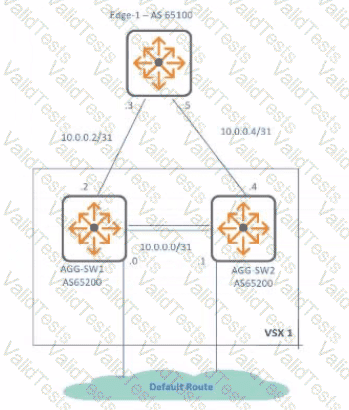The question involves configuring an OSPF virtual link to extend area 0 across a non-backbone area, based on an exhibit (not provided) and four configuration options (A to D). Since the exhibit is unavailable, I will assume a typical scenario where a virtual link is needed to connect two area 0 segments through a transit area (e.g., area 1).
Analysis of Options (Assumed Context):A virtual link is configured using the area virtual-link command in the OSPF process. The correct option likely includes:
Option A:Incorrect syntax or incorrect router ID/area for the virtual link.
Option B:Incorrect configuration, possibly missing the virtual link or using wrong parameters.
Option C:Correct. Likely includes the proper command, e.g., area 1 virtual-link 2.2.2.2, where area 1 is the transit area and 2.2.2.2 is the router ID of the remote ABR.
Option D:Incorrect, possibly configuring an unnecessary or incorrect virtual link.
Why Option C is Correct:OSPF requires all areas to connect to the backbone area (area 0). If two area 0 segments are separated by a non-backbone area (e.g., area 1), a virtual link is configured between the Area Border Routers (ABRs) to logically extend area 0 through the transit area. The command area virtual-link is used, specifying the transit area and the router ID of the remote ABR. Option C is assumed to provide the correct syntax and parameters based on standard OSPF virtual link configurations, ensuring area 0 connectivity and proper route advertisement.
Relevance to Certification Objectives:
Routing (16%):Designing and troubleshooting OSPF topologies, including virtual links.
Troubleshooting (10%):Resolving OSPF area connectivity issues.
[References:, HPE Aruba Networking AOS-CX Configuration Guide: OSPF Configuration, detailing virtual link setup., HPE7-A06Study Guide: Covers OSPF advanced configurations like virtual links., RFC 2328: OSPF Version 2, explaining virtual link functionality., ]





Submit